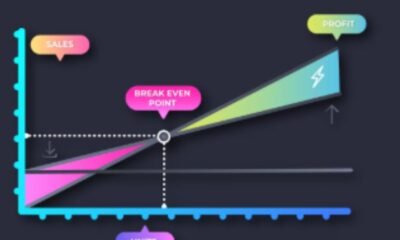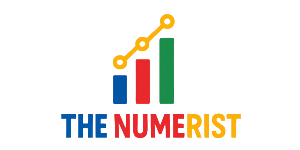BLOG
What’s a Software Developer Really Worth?

What Is a Software Developer Really Worth in 2025?
In today’s digital economy, software developers are some of the most in-demand professionals worldwide. But their salaries vary drastically depending on skillset, experience, location, and specialization. This article dives deep into what software developers are really worth in 2025—covering global salary ranges, in-demand skills, how to maximize earnings, and much more.
Global Salary Benchmarks: A 2025 Snapshot
According to the Bureau of Labor Statistics, the median annual salary for software developers in the United States reached over $120,730 in 2025. In top cities like San Francisco and New York, base salaries easily cross $150,000, with senior developers and engineering leads earning upwards of $200,000 per year.
In contrast, the average salary in Pakistan for a software engineer is around PKR 97,000/month ($340 USD), with experienced developers earning between PKR 150,000–800,000+ per month, depending on skills and industry.
Salary Examples by Country:
| Country | Avg. Monthly Salary (USD) |
|---|---|
| USA | $10,000–16,000 |
| UK | $5,000–8,000 |
| Germany | $5,500–9,000 |
| India | $700–1,800 |
| Pakistan | $340–1,000+ |
| UAE | $4,000–7,000 |
Factors That Influence Developer Salaries
Experience Level
- Entry-level (0–2 years): $300–800/month (in South Asia)
- Mid-level (3–5 years): $800–2,000/month
- Senior/Lead (6+ years): $2,500–5,000/month+ (or more in top-tier countries)
Technical Specialization
Developers who specialize in niche or in-demand domains can command higher pay:
- DevOps Engineer
- AI/ML Engineer
- Blockchain Developer
- Cloud Engineer (AWS, Azure, GCP)
- Cybersecurity Expert
These roles are often paid 20–100% more than standard backend/frontend developers.
Company Type & Industry
Multinational corporations, fintech startups, and software product companies typically offer higher compensation compared to local outsourcing firms or small agencies.
- Startups: May offer equity instead of high salary
- Enterprise: Offers stable salary, insurance, and retirement benefits
- Freelance/Remote: Often higher-paying but less secure
Geography & Remote Opportunities
Your location matters—but thanks to remote work, even developers in low-income countries can work with international companies and earn global-level salaries. For example, many Pakistani or Indian developers working remotely for U.S. firms earn $3,000–5,000/month.
Total Compensation: More Than Just a Paycheck
Salary isn’t just about the base number—developers often get:
- Performance bonuses
- Stock options or equity
- Health insurance
- Training budgets
- Flexible work hours / Remote work
- Annual raises and promotions
Example:
A U.S. developer with a $120k base salary may also receive:
- $10k annual bonus
- $15k stock options
- $5k training budget
- 20 paid vacation days
Average Salary by Developer Role (2025)
| Role | Avg. Monthly Salary (USD) |
|---|---|
| Frontend Developer | $3,000–6,000 |
| Backend Developer | $3,500–7,000 |
| Full Stack Developer | $4,000–8,000 |
| DevOps Engineer | $5,000–9,000 |
| AI/ML Engineer | $6,000–10,000 |
| Blockchain Developer | $7,000–12,000 |
| Mobile App Developer | $3,500–6,500 |
| Game Developer | $3,000–7,000 |
How to Maximize Your Software Developer Salary
Upskill Continuously
Invest in learning high-paying tech like:
- AI/ML (Python, TensorFlow)
- Cloud (AWS, Azure)
- DevOps (Docker, Kubernetes)
- Security (Penetration testing, SOC)
Build a Strong Portfolio
Include:
- GitHub projects
- Freelance work
- Open-source contributions
- Side projects or SaaS apps
Go Global – Work Remotely
Target international clients on:
- Upwork
- Toptal
- Fiverr
- Remote OK
- We Work Remotely
Many developers double or triple their salary through remote contracts.
Negotiate Like a Pro
Use platforms like:
- Glassdoor
- Levels.fyi
- LinkedIn Salary Insights
Know your value. Never accept the first offer—always negotiate.
Trends in Developer Compensation
- Remote-first work models continue to grow, making location less relevant.
- AI and Blockchain devs see 2x the market average salary.
- Tech inflation: Even junior roles now start at $75k+ in many countries.
- Pakistan & India: Surge in remote dev salaries, with strong overseas demand for React, Node, Python, and AWS talent.
FAQs
Q1: What is a good salary for a software developer in 2025?
A good salary varies by region, but globally, anything between $80,000–150,000/year is excellent. In South Asia, $1,500–$3,000/month is considered high.
Q2: Do DevOps or AI engineers get paid more?
Yes. AI, DevOps, and Cloud roles are highly paid due to skill scarcity and growing demand.
Q3: Can I earn a U.S.-level salary while living abroad?
Absolutely. Many developers in India, Pakistan, and Eastern Europe earn $3,000–$6,000/month working remotely for international firms.
Q4: How often do developer salaries increase?
In the U.S. and Europe, salaries rise annually (4–8%). In Asia, developers switching jobs every 1.5–2 years see 20–50% jumps.
Q5: Is freelancing better than full-time?
It depends. Freelancing pays more per hour but lacks job security and benefits. Full-time roles offer stability and growth opportunities.
Conclusion
So, what’s a software developer really worth in 2025? The answer lies in your skills, specialization, and how you position yourself in the global market. Whether you’re starting with PKR 60k in Pakistan or $150k in Silicon Valley, your value grows with continuous learning, real-world projects, and global networking.
BLOG
Besos Meaning: A Journey into the Heart of Latin American Culture

Besos is derived from the Spanish language, where it translates to “kisses.” However, the meaning of besos goes beyond a simple translation. It’s a term that encompasses a range of emotions, from affection and love to passion and intimacy.
The Cultural Significance of Besos
In many Latin American cultures, besos are an integral part of daily life. They’re a way to show affection, greet one another, and express love. The cultural significance of besos is deeply rooted in the values of warmth, hospitality, and closeness.

The Different Types of Besos
While the term “besos” is often associated with romantic love, it’s not the only context in which it’s used. Besos can be exchanged between family members, friends, and even as a greeting or farewell.
- A beso on the cheek is a common greeting in many Latin American countries.
- A beso on the lips is often reserved for romantic partners or loved ones.
- A beso on the forehead or hand can be a sign of respect, affection, or blessing.
“I remember my abuela giving me besos on the forehead every night before bed. It was a special moment that made me feel loved and safe.”
The Emotional Significance of Besos
Besos are more than just a physical gesture; they’re a way to convey emotions and connect with others. The act of giving or receiving a beso can evoke feelings of comfort, security, and love.
FAQs
Q: What is the meaning of besos in Spanish?
A: Besos is the Spanish word for “kisses.” It’s a term used to describe a range of affectionate gestures, from romantic kisses to friendly pecks on the cheek.
Q: How do you use besos in a sentence?
A: You can use besos in a sentence to express affection or love, such as “Dale besos a tu familia de mi parte” (Give your family a kiss from me).
Q: What is the cultural significance of besos in Latin America?
A: Besos play a significant role in Latin American culture, where they’re used to show affection, greet one another, and express love.
Q: Can besos be used in non-romantic contexts?
A: Yes, besos can be used in non-romantic contexts, such as between family members or friends. It’s a way to show affection and closeness.
Conclusion
Besos, we discover that it’s more than just a word – it’s a way to connect with others and express our emotions. Whether you’re looking to deepen your understanding of Latin American culture or simply want to show affection to those around you, besos is a term that’s worth exploring further.
BLOG
Luxury Cruise Passengers: Staying Safe on the High Seas

Luxury cruises often traverse through exotic waters, some of which are notorious for piracy. The Gulf of Aden, the Indian Ocean, and parts of Southeast Asia are known hotspots where pirates have been active. These areas are often near popular cruise routes, putting luxury cruise passengers at risk.
Piracy Tactics: How Pirates Target Luxury Cruises
Pirates have become increasingly sophisticated, using tactics like GPS spoofing and fake ship identities to target unsuspecting vessels. They often look for easy prey, such as slow-moving ships or those with lax security. Luxury cruises, with their high-value passengers and cargo, can be attractive targets.
The Human Impact: Stories from Luxury Cruise Passengers
“I was on a luxury cruise in the Gulf of Aden when we received a piracy warning. The crew immediately took action, increasing security measures and altering our course. It was a harrowing experience, but thanks to their quick response, we were safe.” The fear and uncertainty that come with a piracy warning can be unsettling, but being prepared and knowing what to expect can make all the difference.
Staying Safe: Precautions and Measures for Luxury Cruise Passengers
To minimize the risk of piracy, luxury cruise lines have implemented various security measures. These include:
- Traveling in convoys or with naval escorts
- Implementing advanced security systems, such as radar and surveillance cameras
- Conducting regular security drills and training for crew members
- Increasing security personnel on board

What Luxury Cruise Passengers Can Do
While cruise lines take necessary precautions, passengers can also play a role in staying safe. Being aware of the risks and taking simple precautions, such as staying informed about piracy hotspots and following crew instructions, can help minimize the risk of piracy.
Piracy Warning Systems: How Luxury Cruises Stay Ahead
Luxury cruise lines use advanced piracy warning systems to stay informed about potential threats. These systems provide real-time updates on piracy hotspots and suspicious activity, enabling crews to take proactive measures to avoid danger.
The Role of Technology in Piracy Prevention
Technology plays a vital role in preventing piracy. Advanced systems, such as satellite tracking and AI-powered surveillance, help cruise lines stay one step ahead of pirates. These technologies enable crews to respond quickly and effectively in the event of a piracy warning.
FAQs
Q: What should I do if I receive a piracy warning on my luxury cruise?
A: If you receive a piracy warning, follow the instructions of your crew immediately. They are trained to handle such situations and will take necessary precautions to ensure your safety.
Q: Are luxury cruises more vulnerable to piracy than other types of cruises?
A: Luxury cruises can be attractive targets for pirates due to their high-value passengers and cargo. However, luxury cruise lines often have advanced security measures in place to minimize the risk.
Q: How can I stay informed about piracy hotspots and safety measures on my luxury cruise?
A: Your cruise line will provide you with information about piracy hotspots and safety measures in place. You can also stay informed through government travel advisories and industry reports.
Q: Can I travel safely on a luxury cruise despite the risk of piracy?
A: Yes, with the right precautions and awareness, you can travel safely on a luxury cruise. Cruise lines take piracy seriously and have measures in place to protect passengers.
Conclusion
Luxury cruise, staying informed about piracy risks and taking necessary precautions can help ensure a safe and enjoyable journey. By understanding the risks and being aware of the measures in place to prevent piracy, you can relax and enjoy your time on board.
BLOG
Mandarin for Mandarin: Tips and Tricks for Language Learners

Mandarin can be a rewarding and enriching experience, especially when you focus on learning Mandarin for Mandarin. By doing so, you can:
- Improve your pronunciation and intonation
- Develop a deeper understanding of Chinese culture and history
- Enhance your career opportunities in China or with Chinese companies
Immersing Yourself in the Language
One of the most effective ways to learn Mandarin for Mandarin is to immerse yourself in the language. This can be done by:
- Watching Chinese movies and TV shows
- Listening to Chinese music and podcasts
- Speaking with native Mandarin speakers
For example, “I started watching Chinese dramas with English subtitles and it really helped me improve my listening skills and get used to the natural flow of the language.”

Tips for Learning Mandarin for Mandarin
When it comes to learning Mandarin for Mandarin, there are several tips to keep in mind:
- Focus on tones and pronunciation
- Practice speaking and listening regularly
- Use language learning apps and resources
Using Language Learning Apps
There are many language learning apps available that can help you learn Mandarin for Mandarin. Some popular options include:
- Duolingo
- HelloTalk
- Pleco
FAQs
Q: What is the best way to learn Mandarin for Mandarin?
A: The best way to learn Mandarin for Mandarin is to immerse yourself in the language by watching Chinese media, speaking with native speakers, and practicing regularly.
Q: How can I improve my Mandarin pronunciation?
A: You can improve your Mandarin pronunciation by listening to native speakers, practicing speaking regularly, and using language learning apps that focus on pronunciation.
Q: What are some common challenges when learning Mandarin for Mandarin?
A: Some common challenges include mastering tones, understanding grammar and syntax, and finding opportunities to practice speaking and listening.
Q: Can I learn Mandarin for Mandarin on my own?
A: Yes, you can learn Mandarin for Mandarin on your own with the right resources and motivation. However, it’s also helpful to work with a language exchange partner or tutor to get feedback and support.
Conclusion
Mandarin for Mandarin requires dedication, persistence, and the right resources. By immersing yourself in the language, practicing regularly, and using the right language learning tools, you can achieve fluency and unlock new opportunities. Whether you’re a beginner or advanced learner, there’s always room to improve and refine your Mandarin skills.
-

 TECH6 months ago
TECH6 months agoApple iPhone 17: Official 2025 Release Date Revealed
-

 BLOG6 months ago
BLOG6 months agoUnderstanding the ∴ Symbol in Math
-

 EDUCATION6 months ago
EDUCATION6 months agoHorizontal Translation: How to Shift Graphs
-

 EDUCATION6 months ago
EDUCATION6 months agoUsing the Quadratic Formula
-

 EDUCATION6 months ago
EDUCATION6 months agoThe Meaning of an Open Circle in Math Explained
-

 HEALTH6 months ago
HEALTH6 months agoGoodNever: Wellness, Simplified
-

 EDUCATION6 months ago
EDUCATION6 months agoWhy Does m Represent Slope?
-

 EDUCATION6 months ago
EDUCATION6 months agoHow to Solve Quadratic Equations 2
